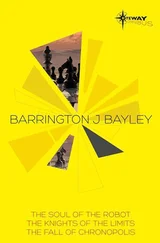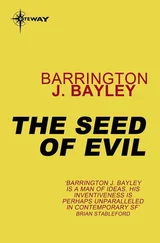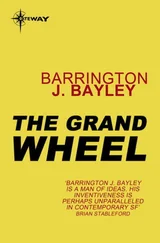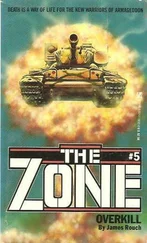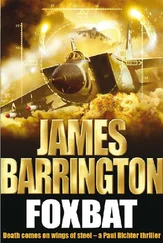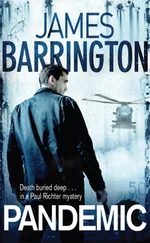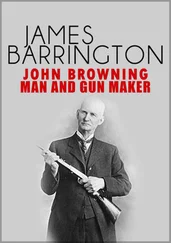Kemp traced the route across the map with the pointer. ‘There don’t seem to be any particularly good reasons for doing a surveillance run over that region – I can think of lots of bits of Russia I would far rather see in glorious black and white under my shifty-scope – so our first thought was that maybe the Americans were trying to sell us a pup by giving us incorrect route details. However, even a cursory examination of the films ruled that one out. There are numerous points of agreement between the films and the topography of the area, and we’re satisfied that the route specified is that actually flown by the Blackbird.
‘We also considered the possibility that the aircraft was off-route, but that is so unlikely as to be ridiculous. Apart from the Aurora, the SR–71A is the most advanced surveillance aircraft in the world, and all Blackbird crews are highly experienced. If they photographed this bit of Russia, then this bit of Russia is the bit they wanted to photograph. The final possibility, that of a substitution of films, we also ruled out, as the films were removed from the cameras and developed under JARIC supervision. So, we know that the films show whatever the Americans were looking for. Assuming it’s there, of course.
‘Total filming time was a little under twenty-three minutes, which gave us a good deal of film to work on. We assumed that the Americans would have started the cameras well before their objective, and stopped them a reasonable distance after the aircraft had passed over it, so we’ve been concentrating on the central portion of the film, after a preliminary survey of the entire route.
‘Four cameras were used by the Americans, of two different types. The two main cameras were the normal high-resolution models as used in most aircraft of this type, similar to those used in the so-called spy satellites. The two in the Blackbird were of a very advanced design, particularly in the optical set-up, and from an examination of them and the films we have assessed that these cameras approach the theoretical maximum possible resolution.’
‘Which is?’ Richter interrupted.
‘It’s determined by the laws of physics and the height of the platform. For a satellite at normal orbital elevation, it’s just under four inches. The Blackbird flies a lot lower, of course, so the maximum resolution is greater – in this case, a little under two inches. To put that into slightly more comprehensible terminology, if you were sitting on a park bench reading a newspaper and one of these cameras took a photograph of you from fifteen miles up, an analyst would not quite be able to read the headlines in your paper, but he would almost certainly be able to identify what newspaper it was.’
‘That,’ said Richter, ‘is very impressive.’
‘You’d be surprised at what the eye in the sky can see, and has been able to see for some time, actually. Those cameras were working independently, taking one frame every half second, one using a very high-speed monochrome film and the other high-speed colour, and covering a narrow strip of territory. The other two cameras were of a much less sophisticated design, and were working together, exposing one frame simultaneously every two seconds. They were obviously intended to supply stereoscopic photographs of the whole area that the Blackbird was flying over.’
As Kemp paused there was a knock at the door, so coincidentally timed that Richter knew whoever it was had waited until Kemp had stopped talking before knocking. The door opened and two men and a girl filed in. Richter looked at her first, because he always looked at women first. She was wearing the uniform of a sub lieutenant WRNS – what used to be third officer in the old days before the Navy began taking women to sea – and Richter was surprised to see her. Not her personally, but a Wren in a highly restricted RAF establishment. She had piercing blue eyes and a mass of blonde hair presently tightly constrained in the regulation bun on the back of her head, but which Richter had no doubt would tumble free as soon as she was off duty. The two RAF officers, in contrast, paled into insignificance. Kemp ushered them all in and made the introductions.
‘Lieutenant Commander Richter, let me introduce the team which has been burning the midnight oil over these films since Sunday evening. First of all, Sub Lieutenant Penny Walters, who is here on exchange from the Royal Navy.’
She smiled at Richter. He gave her his nice smile and turned to Kemp. ‘I don’t know what you exchanged her for, but I think you got the better end of the deal.’
Kemp laughed and she blushed slightly.
‘The home team consists of Flight Lieutenant Keith George and Flying Officer Dick Tracey. Dick’s real name is William, but he’s been known as Dick since the day he arrived at Cranwell, and I think he’s finally started to get used to it.’
Richter said he was pleased to meet them all, and got a chorus of ‘Good morning, sir’ in return. Kemp announced that he had almost finished the general briefing, and invited the three of them to take seats while he wrapped up the loose ends.
‘What you will see,’ Kemp continued, ‘is an unusual presentation of the photographs we received. As I said, we invariably view stills taken from a picture sequence on an illuminated table through a shifty-scope or on a computer monitor. You’re not PI-trained, and we didn’t think you would be able to learn anything that way, so we decided to radically change the presentation.
‘There was also the problem of the vast amount of material we had available. As you will appreciate, with the cameras taking one frame every half second, the total mass of the film is huge, almost three thousand frames. What we’ve done is effectively condense it by photographing the frames with a thirty-five millimetre cine camera – video doesn’t have the definition we need – and then we can project it as a movie film. The effect you’ll see is as if you were actually in the moving aircraft, looking downwards through a very good pair of binoculars at the landscape underneath you.’
Kemp tugged at the base of the map of Russia and it rattled back into its box, then he pressed a button on the lectern and spoke into the microphone. ‘Are you ready, projectionist?’ There was a muffled grunt from a speaker on the rear wall, and Kemp sat down beside Richter. The lights dimmed – the projectionist obviously had a rheostat control – and the screen at the end of the room was suddenly brilliantly illuminated by white light. A few flickers, then the title sequence ran. The screen went dark and Richter leaned forward.
Less than a minute later he leaned back again. He didn’t know exactly what he had been expecting, but it wasn’t the incomprehensible melange of blacks, whites and various shades of grey that were moving jerkily across the screen. It made absolutely no sense to him, and he said as much to Kemp.
‘I’m not surprised,’ Kemp replied. ‘PI is definitely an acquired art.’ He went to the lectern and spoke into the microphone. ‘Freeze it.’ The film flickered for a second or two, then stopped. Kemp pointed at the screen. ‘Can you identify anything on that?’
Richter studied it carefully. It looked to him more like a surrealist painting than anything else. A bad surrealist painting, possibly hanging upside down. He shook his head. ‘Not a thing.’
‘Penny, would you mind?’
‘Not at all, sir.’ Penny Walters got up and walked forward to the lectern. Taking another pointing stick, this one with a tiny light in the end, she turned to the screen.
Among the blacks, whites and greys on the photograph Richter could pick out three definable features; a meandering line running more or less north-west, assuming that the top of the screen was north which, on reflection, he decided it probably wasn’t. There was a small squarish grey blob in the bottom right-hand corner, and a larger, darker oblong patch just above the blob. It was all as clear as gravy as far as he was concerned. Sub Lieutenant Walters, however, seemed unperturbed.
Читать дальше

